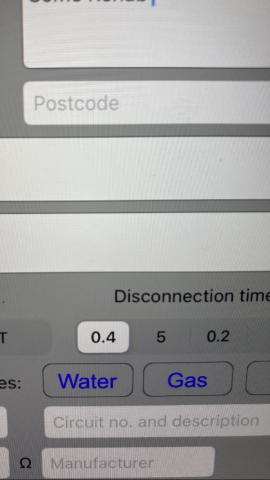
You may remember a time when you had your vehicle go through a MOT at the garage, When you received the paperwork, you may also remember looking at the test results obtained on the emissions and thinking it was a foreign language to you
Well, its the exact same for test results on an electrical form, weather it be a certificate or a report. However, the information is important and has some use to you. I am going to carry on with the reasoning for this further on in this article
The reason us electricians test existing electrics is simple... ultimately, to confirm that the system is safe, yes, but it goes a bit deeper than that. When you hire a professional electrician, he/she will be conducting testing procedures from the minute they start a project right up until they declare their task complete
I would like to educate you a little on the matter
Let me give you an example:
William Sans Electrical Services have been tasked to install an additional socket to a lounge, which is to be powered from a socket outlet local to this about 2m away from the new sockets position
William arrives for work. He takes the fuse board cover off and preforms a couple of testing procedures before he has even installed any new cable in the building
William then isolates the circuit he is working on and then proceeds to dismantle the socket outlet in which he is to supply the new accessory from. However, he conducts some further testing
And finally, William then installs the new socket, but before he cleans the area and packs his tools away, he proceeds to carry out some more testing! Later on that evening, William sends his customer a certificate covering the work he has carried out
What William has done is what I like to call 'textbook' and let me explain why
When William started his work, he made sure that the existing electrical set up was safe to be modified. He then made sure that the socket that was supplying the new socket was also safe and suitable to be modified. When he finished his work, he then made sure that his new work was safe to be used
This is a professional electrician doing what a professional electrician does, installing safe electrics. Did you notice that William was constantly using his testing equipment the whole time he was at the property? By doing this, William has confirmed that the new work poses no electric shock risks, risks of fires or burns and because he has done this, William has no issue putting everything on a paper format in the form of certification
When you hire a professional electrician, they will constantly be testing and expecting as they go along. If you are unfortunate to hire someone who isn't qualified or perhaps 'can do a bit of small electrical work', then you run the risk of them installing something that is not safe or modifying something that is not fit to be modified in the first place due to testing not being carried out. The work may 'work' and seem to function correctly, but no tests were carried out to confirm that if a fault should occur, then the fuse or RCD at the fuse box will isolate the power in a timely fashion, specifically within 0.1 - 0.4 seconds which is the tolerance we work to
No matter how small a job, if it is not carried out correctly, it can present further dangers that were not there previously
As for the test results on the paperwork that make no sense to you. It is important to keep these details for the following reason
If past paperwork is made available to any new electricians carrying out work in the future (should William not be available this time), then the electrician who understands this language on the form can 'interpret' what sort of test results they should be obtaining when they carry out their new work by comparison. Also, if any of the results differ from the unexpected test results, they may be also able to confirm if any existing part of the installation may be breaking down and require attention. This further adds to safety. So my message, as always, is keep your electrical documents in a safe place!
In out local area that is Huntingdon, there are a lot of Victorian houses from the 1910's era, which will have been rewired in the 60/70s with this wiring still in service to this day. If the system is to be modified, it is important to make sure that the installation can handle new stresses put on it before any new works are installed and put into service

